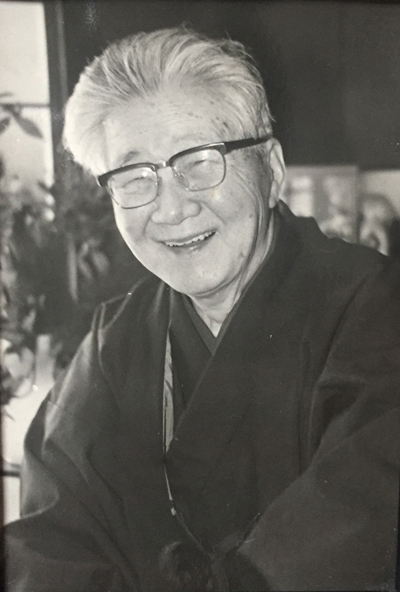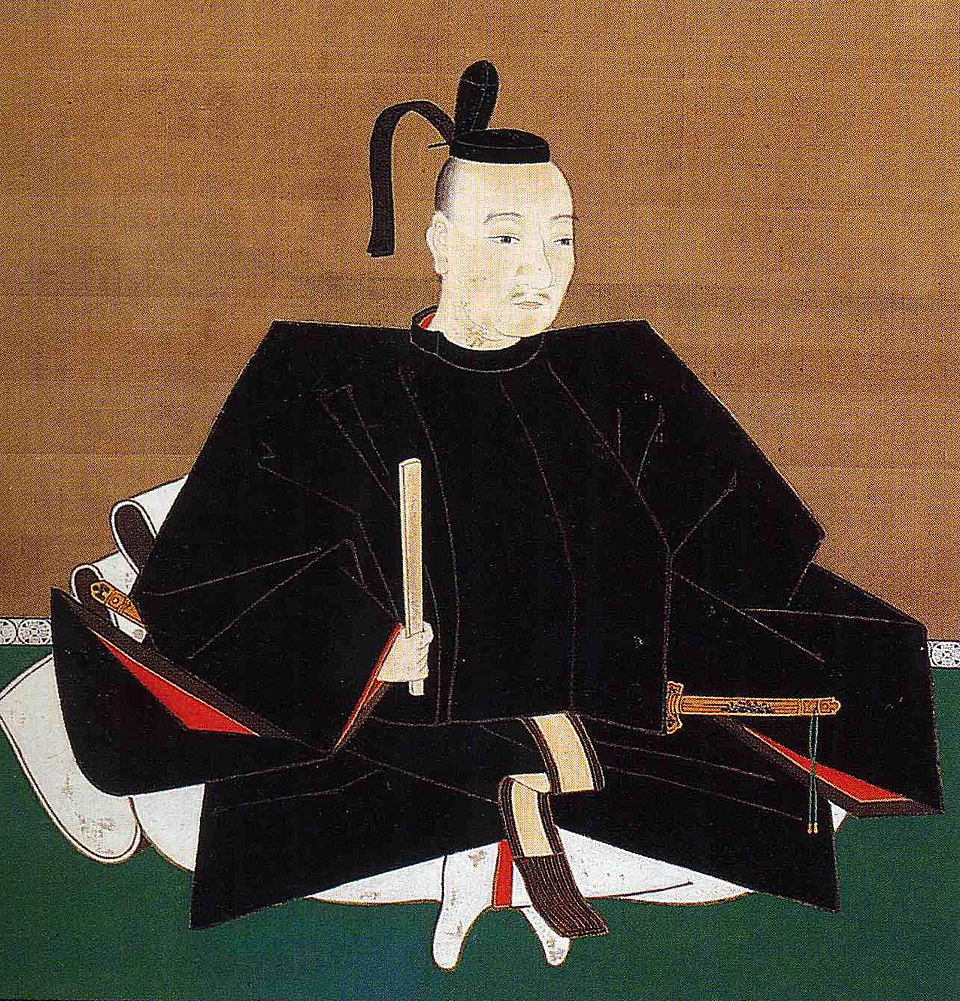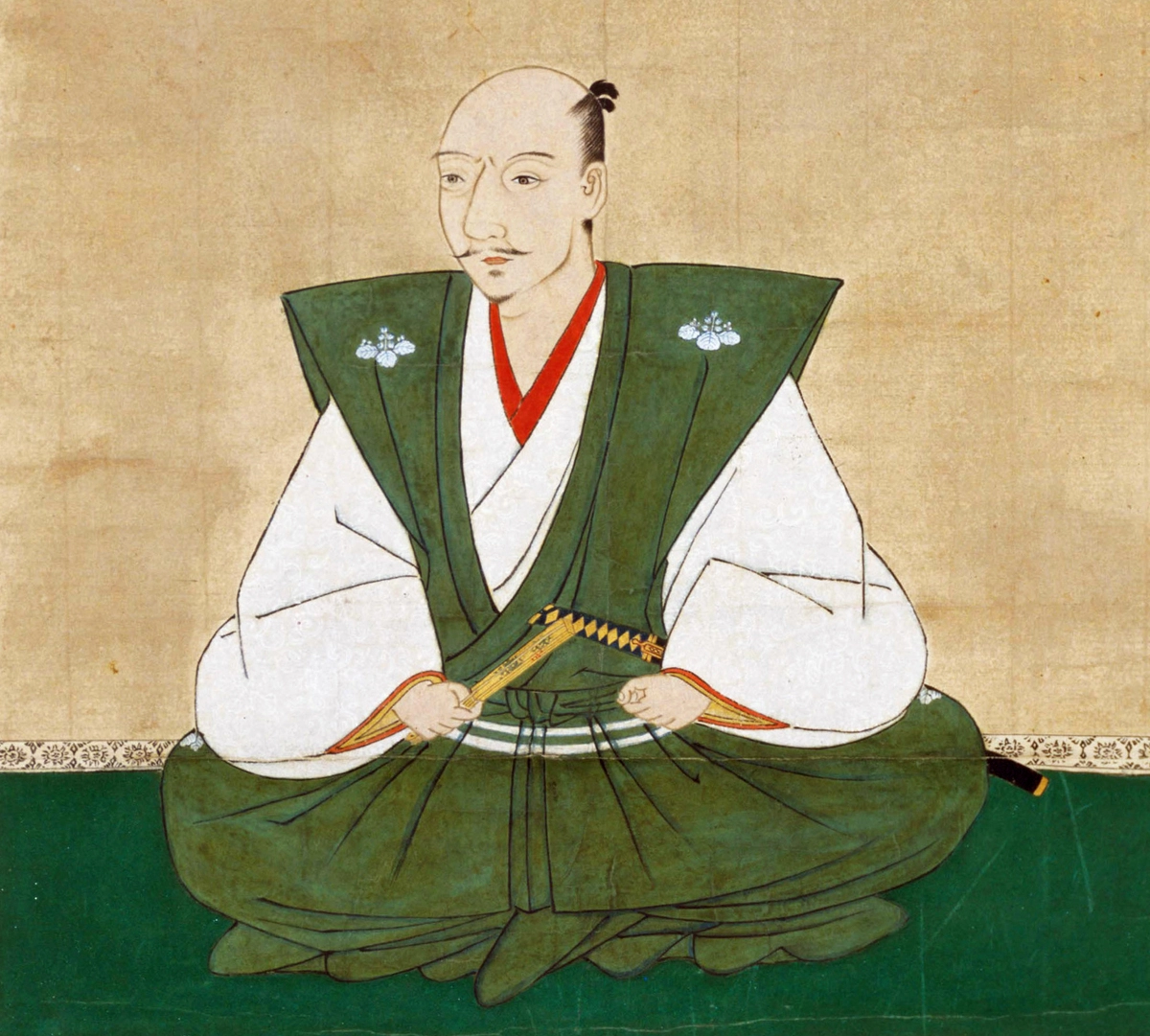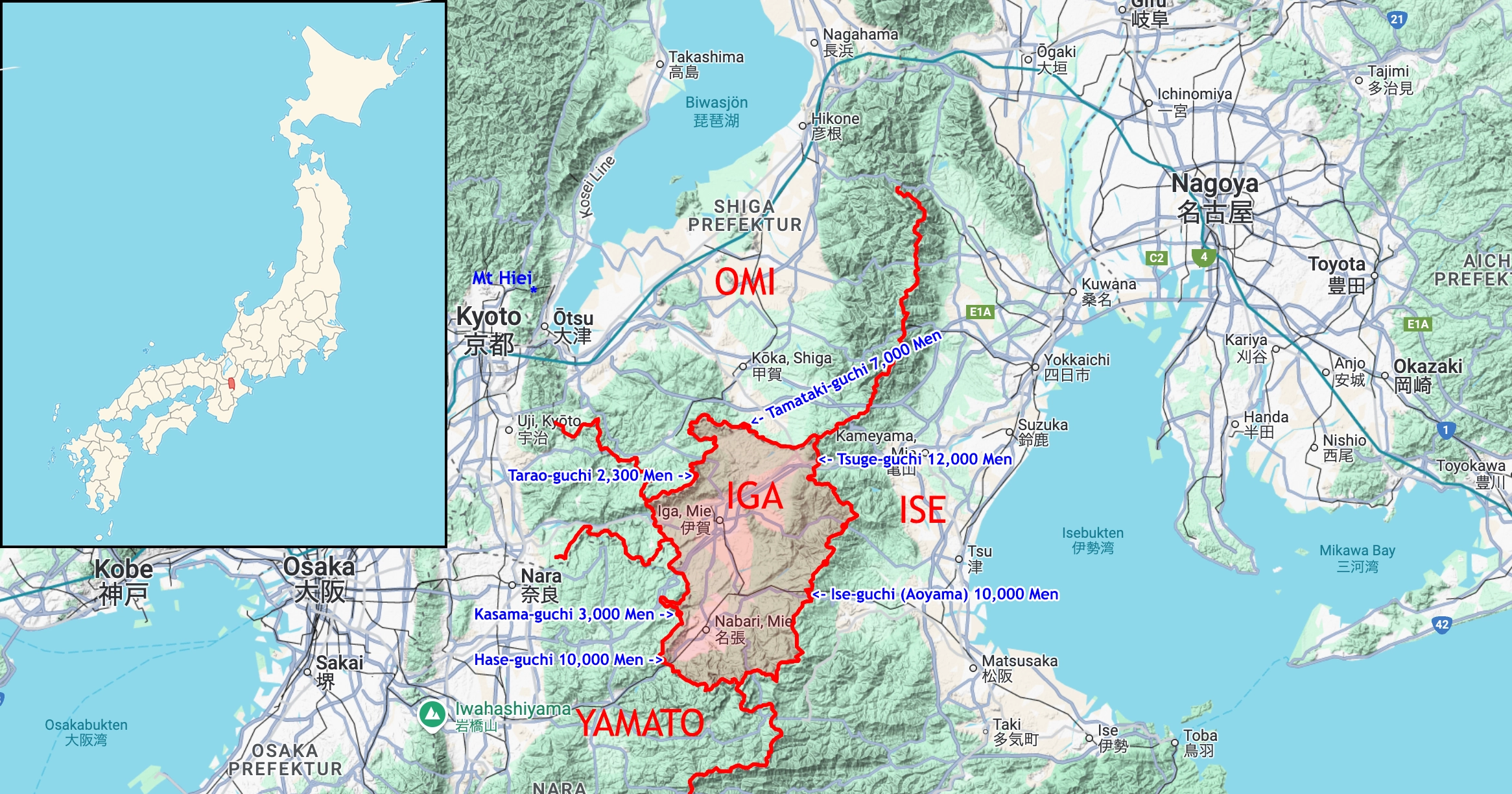
Tenshō Iga War (Page 193-199) from the book Ninjutsu Sono Rekishi To Ninja by Heishichirō Okuse.
As previously noted, the Iga ninjutsu practitioners harbored deep resentment toward 織田 信長 Oda Nobunaga, viewing him as an irreconcilable enemy, primarily due to the Tenshō Iga War.
What Was the Tenshō Iga War?
Throughout the Sengoku period (1467–1615 CE), 伊賀 Iga was largely a leaderless region. Toward the end of the Sengoku period, Niki Danjō Tomoume briefly held the nominal title of lord of Iga, supported by local chieftains, but, dissatisfied with a mere titular role, he was driven out and forced to flee—a rare event in Iga’s history.

The one who set his sights on this leaderless Iga was Kitabatake Nobuo (also known as 織田 信雄 Oda Nobuo), who had been adopted into the Kitabatake family, orchestrated the murder of his adoptive father, and seized control of the family to become the lord of Ise. Nobuo was the son of Oda Nobunaga. When Nobuo became the lord of Kitabatake, Iga suddenly found itself directly bordering Oda-controlled territory.
Nobuo noticed that a sturdy mountain castle at Maruyama in Shimogōbe, Nabari District, Iga Province—originally built by his adoptive father, Kitabatake Tomonori, as a base for attacking Iga—had fallen into disrepair. He ordered his vassal, Takigawa Saburōbē, to repair and restore the castle.
Realizing that Nobuo’s actions marked the beginning of Oda Nobunaga’s invasion of Iga, the Iga local warriors (Jizamurai) gathered at Heirakuji Temple in Ueno Castle to discuss the situation. They resolved to set aside past grievances, uniting the northern and southern Iga warrior groups to resist the external threat. Consequently, the Iga forces launched a surprise attack on the nearly completed Maruyama Castle, burning it down and driving Takigawa Saburōbē back to Ise. This occurred in July 1578 CE (Tenshō 6).

The First Tenshō Iga War
Upon receiving Takigawa’s report, Nobuo was enraged and vowed revenge. The following year, in September 1579 CE (Tenshō 7), he led an army of over 8,000 from his castle at Matsugasaki toward Iga. This marked the First Iga War. Nobuo, commanding a large army, aimed to conquer Iga in one swift campaign, splitting his forces into three routes. However, the Iga army (a coalition of local warriors), having received prior intelligence of this plan, skillfully used the mountainous terrain to block Nobuo’s advance.
From the morning to the afternoon of September 17, the Iga forces, with all ninjutsu practitioners mobilized, pinned down Nobuo’s army on the mountain paths. At night, they employed their signature night raids and surprise attacks, striking Nobuo’s forces. As a result, all three routes of Nobuo’s army suffered heavy losses, and by the morning of September 18, Nobuo himself was forced to flee for his life with his remaining troops. The outnumbered Iga army had triumphed over Nobuo’s large force.
When Nobunaga heard of Nobuo’s defeat, he reprimanded him, saying, “What a fool to cause trouble at such a critical time!” He ordered Nobuo to stand down and prohibited further military action against Iga. For Nobunaga, who was focused on unifying Japan, Nobuo’s attack on Iga was an unnecessary distraction—an example of “a child not understanding a parent’s intentions.” However, Nobunaga likely made a firm resolve at that moment: “Iga, you’ll pay for this! As soon as I have the chance, I’ll crush you completely!” His subsequent actions—the Second Iga War—reveal this intent.
The Second Iga War

Two years later, in September 1581 CE (Tenshō 9), when the tides of national power had begun to stabilize, Nobunaga suddenly gathered his generals at Azuchi Castle and ordered an immediate attack on Iga.
The announcement was so abrupt that the summoned generals were reportedly taken aback. (Nobunaga likely took great care to prevent Iga and Kōga ninjutsu practitioners from gathering intelligence, which would have given the Iga warriors time to prepare.) The invasion plan was as follows:
Iga Invasion Plan
| Route | Generals (〇 indicates overall commander) | Troop Strength |
| 1. Ise Route | Kitabatake Nobuo, Oda Nobusumi, Yoshida Hyōbu 〇 | 10,000 |
| 2. Takitsume Route | Naitō Jinzaemon, Takigawa Shōkan, Tōdō Shōkan, Dōgi Daibu, Wakebe Sakyō 〇 | 14,000 |
| 3. Tamataki Route | Ujiie Shigetake, Wakisaka Yasuharu, Yamaoka Kezukasa 〇 | 7,000 |
| 4. Kasama Route (Yamato) | Tsutsui Junkei, Tsutsui Sadatsugu 〇 | 3,000 |
| 5. Hase Route (Yamato) | Asano Nagamasa, Shinjō Suruga-no-Kami, Ikoma Uta-no-Kami, Mori Ichikigami, Toda Danjō-Shōsuke, Sawa Genjirō, Akiyama Sakon-Dayū, Yoshino Miyauchi-Shōsuke 〇 | 10,000 |
| 6. Tarao Route | Hori Hidemasa, Tarao Mitsuhiro 〇 | 2,300 |
| Total Routes: 6 | 23 Generals | Total Troop Strength: 46,300 |

This was an enormous army for the time. Iga’s population during this period is estimated at around 90,000, meaning the invading force was over half the region’s entire population.
Nobunaga instructed his generals to thoroughly exterminate the Iga warriors and implement a scorched-earth strategy.
On September 27, the invasion forces attacked Iga from all six routes simultaneously, descending like an avalanche. The Iga coalition army, numbering fewer than 4,000 across the entire region, stood to resist them. Despite the ninjutsu practitioners leading their得意 mountain warfare, night raids, and guerrilla tactics, the outcome was predetermined by the sheer disparity in numbers.
The battle, which began on September 27, ended after seven days with a complete victory for the Oda forces, except for a few remaining pockets of resistance. Kashiwara Castle, where southern Iga warriors made their last stand, fell on October 28, marking the end of the Iga War in both name and reality.
Excerpt above about Ninjutsu History from the book Ninjutsu Sono Rekishi To Ninja by Heishichirō Okuse.
Heishichirō Okuse (奥瀬 平七郎, おくせ へいしちろう) was a Japanese novelist, researcher, and politician born on November 13, 1911, in Ueno, Japan. He passed away on April 10, 1997.
Okuse graduated from Waseda University and studied under the renowned author Masuji Ibuse. He developed a particular interest in ninjutsu (the art of stealth and espionage), contributing to its study and preservation. Professionally, he worked for the Manchurian Telephone & Telegraph Company.
In addition to his literary and research endeavors, Okuse served as the mayor of Ueno from 1969 to 1977. His multifaceted career reflects a deep engagement with both traditional Japanese martial arts and public service.
